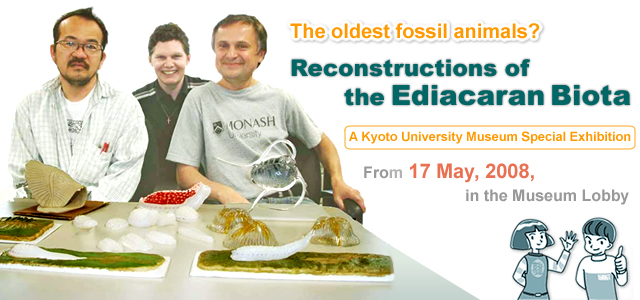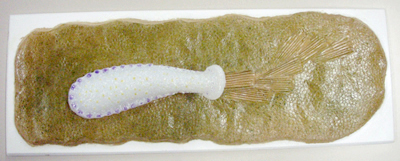

Since 2001, Kyoto University has partnered with the Palaeontological Institute, Russian Academy of Sciences, Moscow, in the study of Ediacaran fossils. Dated at 560 million years old, Ediacaran fossils have been found in rocks all over the world, although their biology and ecology remain shrouded in mystery.
From mid-February to mid-May 2008, Dr. Andrey Ivantsov, of Moscow`s Palaeontological Institute, spent three months as a guest scientist at the Kyoto University Museum. During this time, Dr. Ivantsov worked with Nishio Biological Models Co., Ltd. to create models of Ediacaran organisms. He also visited the Toba Aquarium to observe the primitive mollusc, Solenogaster, and observed many other modern animals in order to make comparisons with Ediacarans.
Over 800 specimens of the Ediacaran Kimberella have been found in rocks from Russia`s White Sea region and are housed in the Palaeontological Institute in Moscow. By comparing Kimberella with primitive molluscs, some new reconstructions have been produced.
The models which are on display are initial efforts and are therefore experimental in nature. However, it is hoped that this will provide a foundation on which to base further studies. Ultimately, the aim of this collaborative research is to better understand the enigmatic and fascinating Ediacaran fossils.
The photograph (above) shows the model reconstruction team. (From left: Soichi Nishio, director of Nishio Biological Models Co.; Matt Inglis, second year Ph.D. candidate in the Graduate School of Science; and Dr. Andrey Ivantsov, of the Palaeontological Institute, Russian Academy of Sciences, Moscow.)

